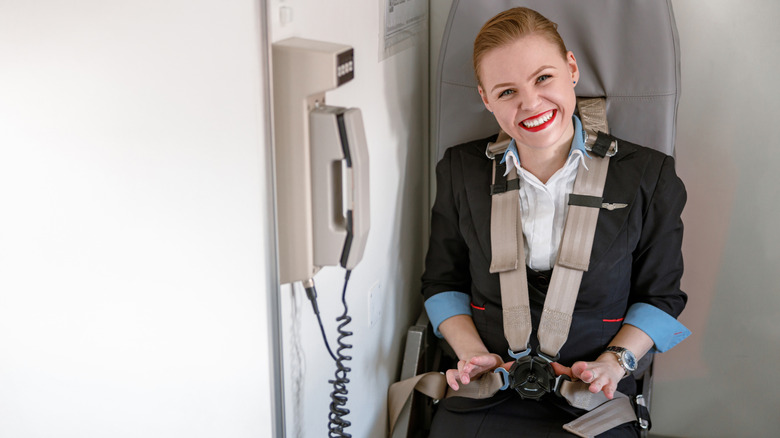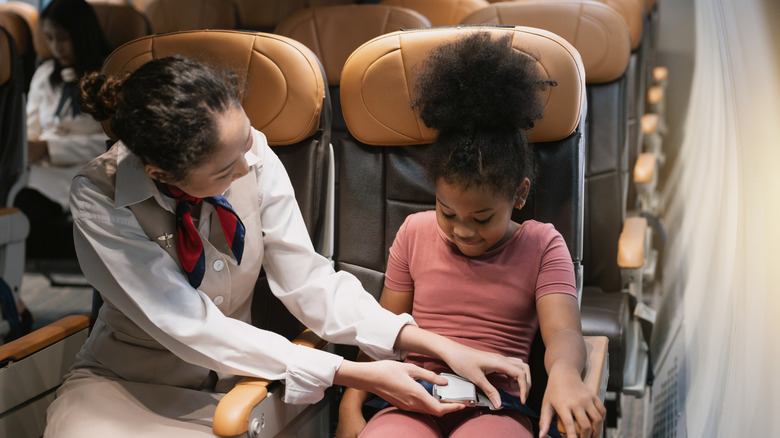Why Flight Attendants Have Cross-Body Seatbelts (But Passengers Don't)
Traveling by plane comes with risks, as shown by some of the worst accidents in aviation history. But even though accidents are inevitable, the airline industry always tries its best to anticipate the worst for both its workers and passengers. That's why each aircraft is meticulously designed with safety features. One primary safety feature found in all airplanes is the seatbelt. Long before the first car with seatbelts came into existence, the feature was already used by glider pilots as a restraining system during flights. The original design was a lap belt that would go over the waist. However, while car seatbelts eventually evolved into three-point safety harnesses, aviation seatbelts remained the same.
The lap belts for passengers keep them safe during takeoff, turbulence, and crash landings. Since aircraft are only likely to ascend and descend in the event of an accident, the lap belts are perfect for securing the passengers in place. However, you may have noticed the seatbelts worn by flight attendants — who are typically seated on jump seats at the front — run across their bodies, forming an "X." Marina Efthymiou, a professor of aviation management at Dublin City University, has explained that the cross-body seatbelts are a deliberate design choice. "Cabin crew seats are in spaces that do not offer any additional protections, [thus,] the belt provides more stability," she told Metro.
How safe are lap belts for plane passengers?
The aviation industry is rapidly evolving, with the likes of helicopter-airplane hybrids and air taxis likely taking over in the future. And yet, lap-only seatbelts have been in use for decades without any design upgrades. For years, many have been clamoring for better seat restraints in planes, especially since scientific data has shown their downsides. A 2020 study deemed lap seatbelts unsafe since they were not enough to protect passengers against injuries and head traumas caused by rapid deceleration accidents. But to be fair, other forms of restraints, including shoulder harnesses, would also not be able to save passengers during a catastrophic mid-air failure, when the plane abruptly drops from 35,000 feet in the sky.
Still, there have been efforts to update airplanes' safety equipment, with shoulder harnesses being suggested as replacements. In small, general aviation jets, these shoulder belts are already standard as the Federal Aviation Administration (FAA) has determined that the design effectively lowers the risk of major injuries by 88%. However, adoption in commercial planes is challenging. An anonymous airline seat engineer told NBC News that attaching over-the-shoulder belts to public jet seats is not possible since they require larger and heavier seating structures. Another suggestion is the addition of airbags to improve passenger safety. But that, too, comes with issues, as airbags can only inflate once and would not be useful in most airplane crash scenarios. Plus, their short lifespan could increase a plane's upkeep.

